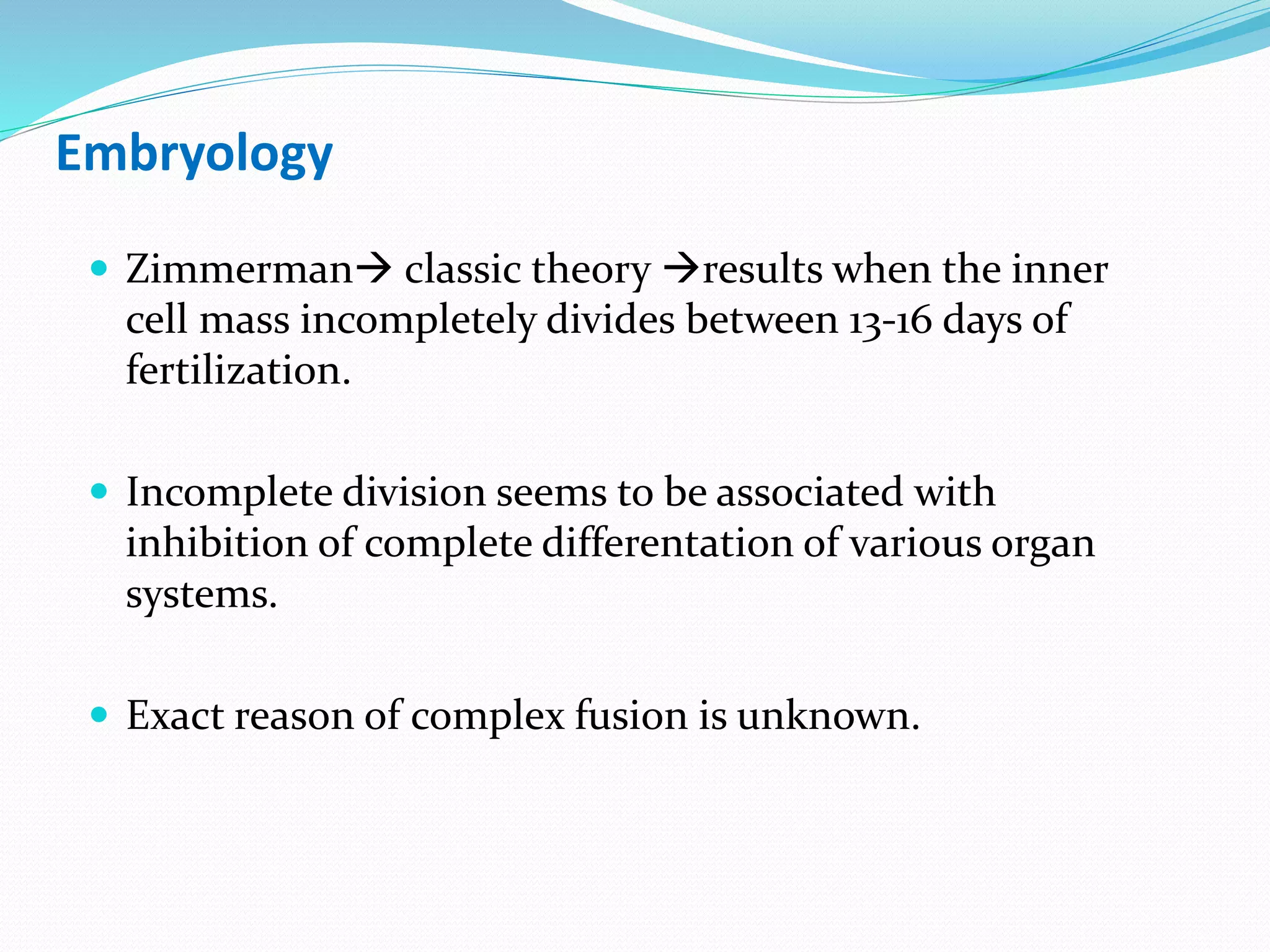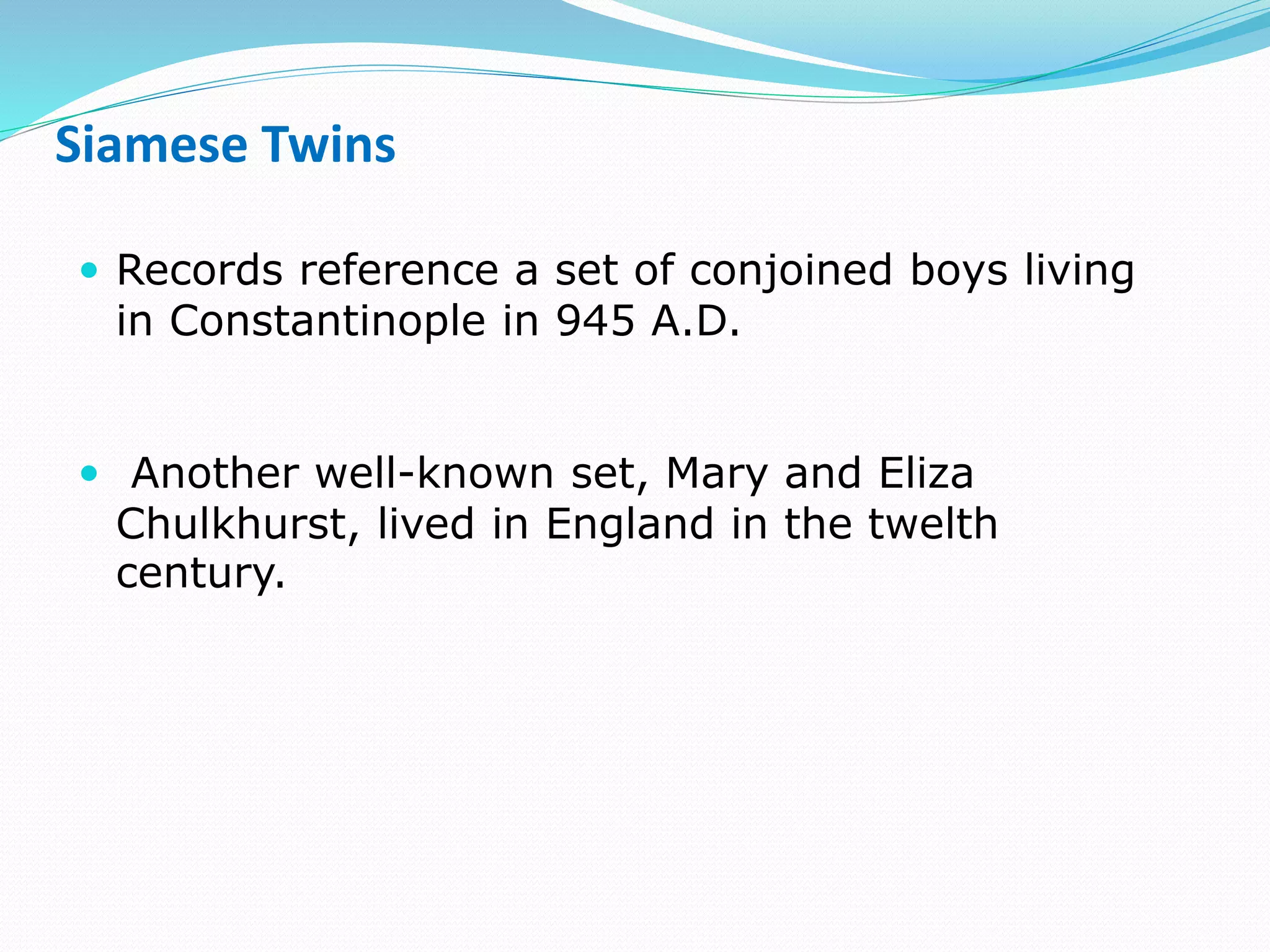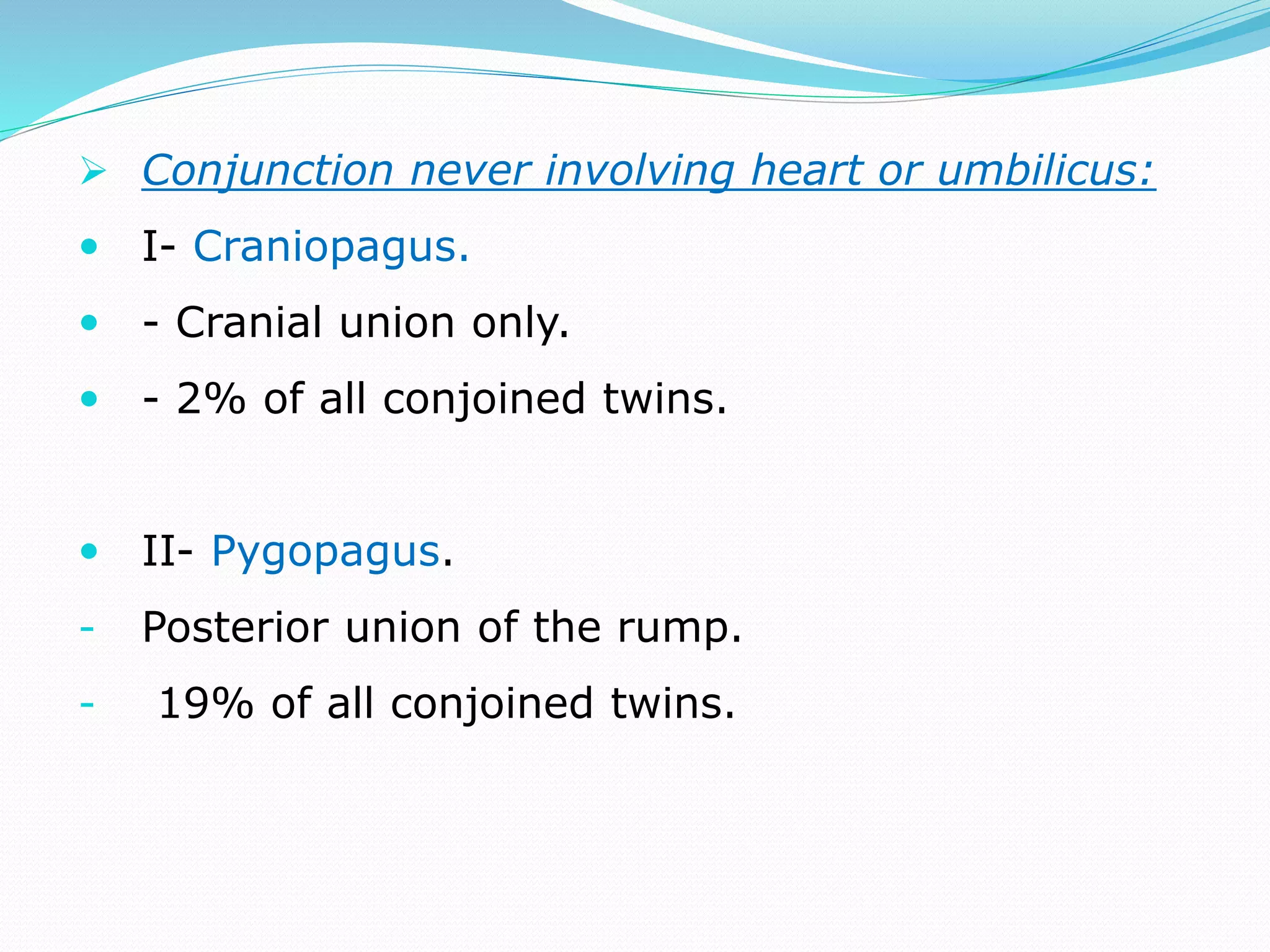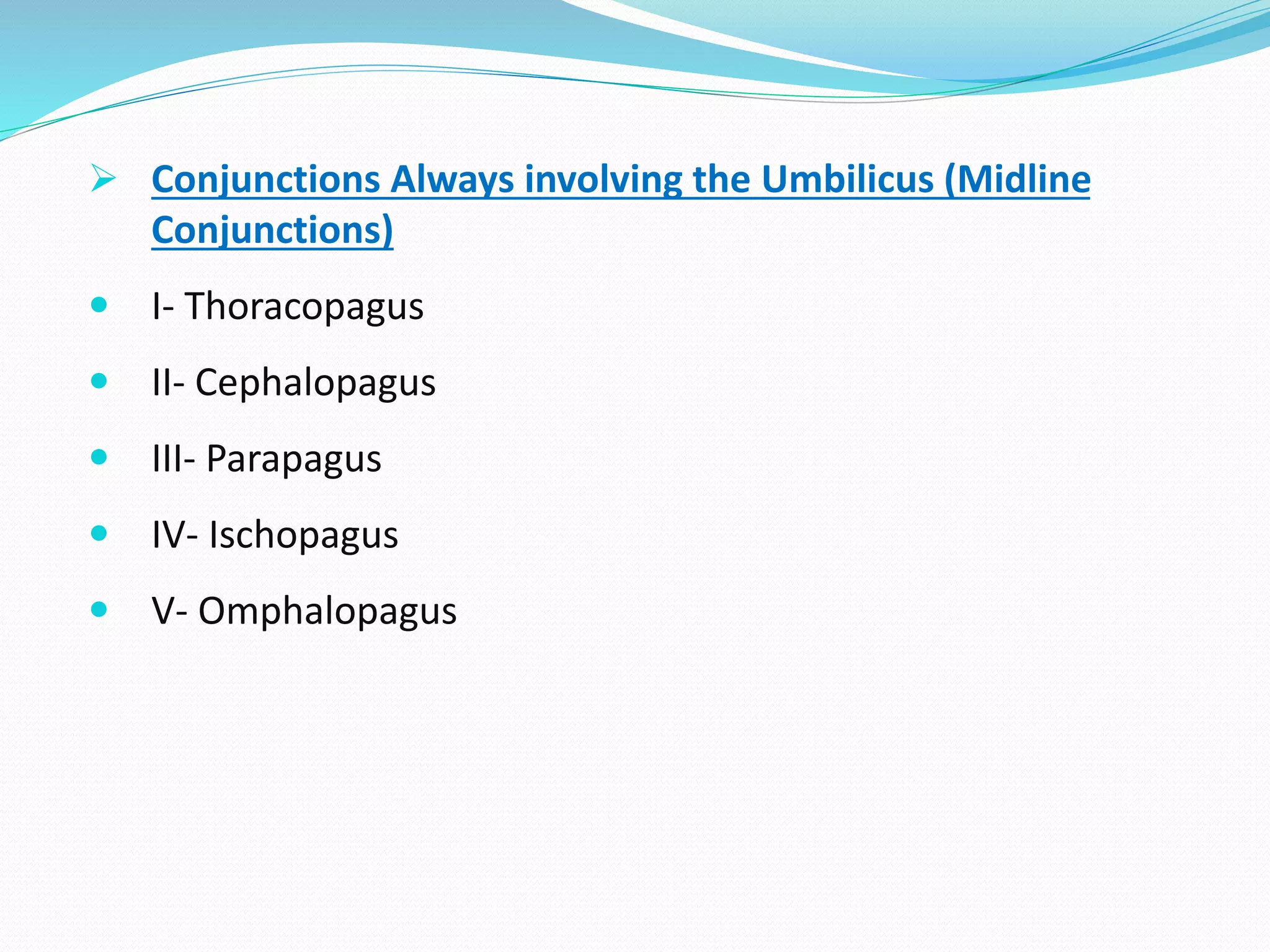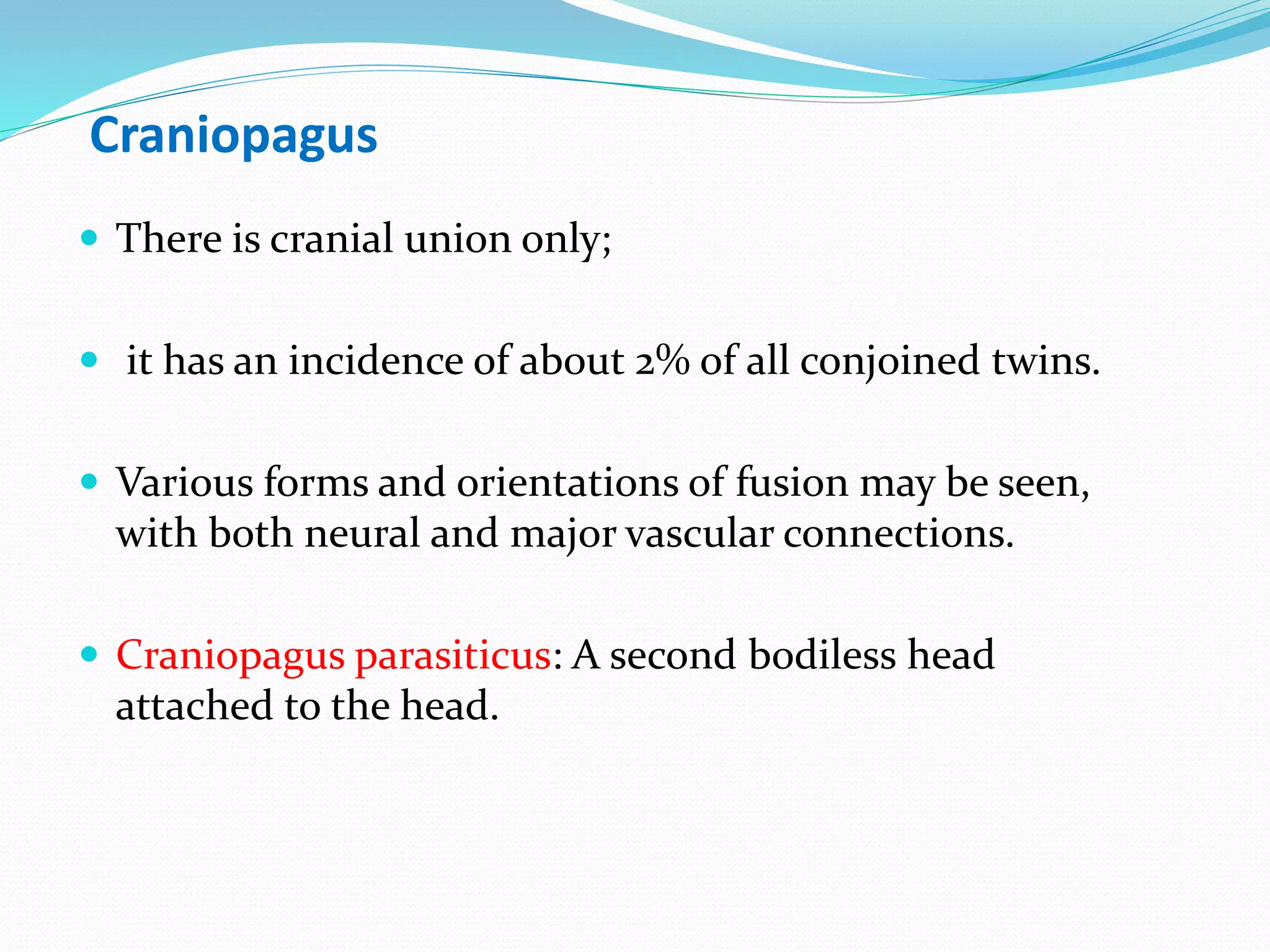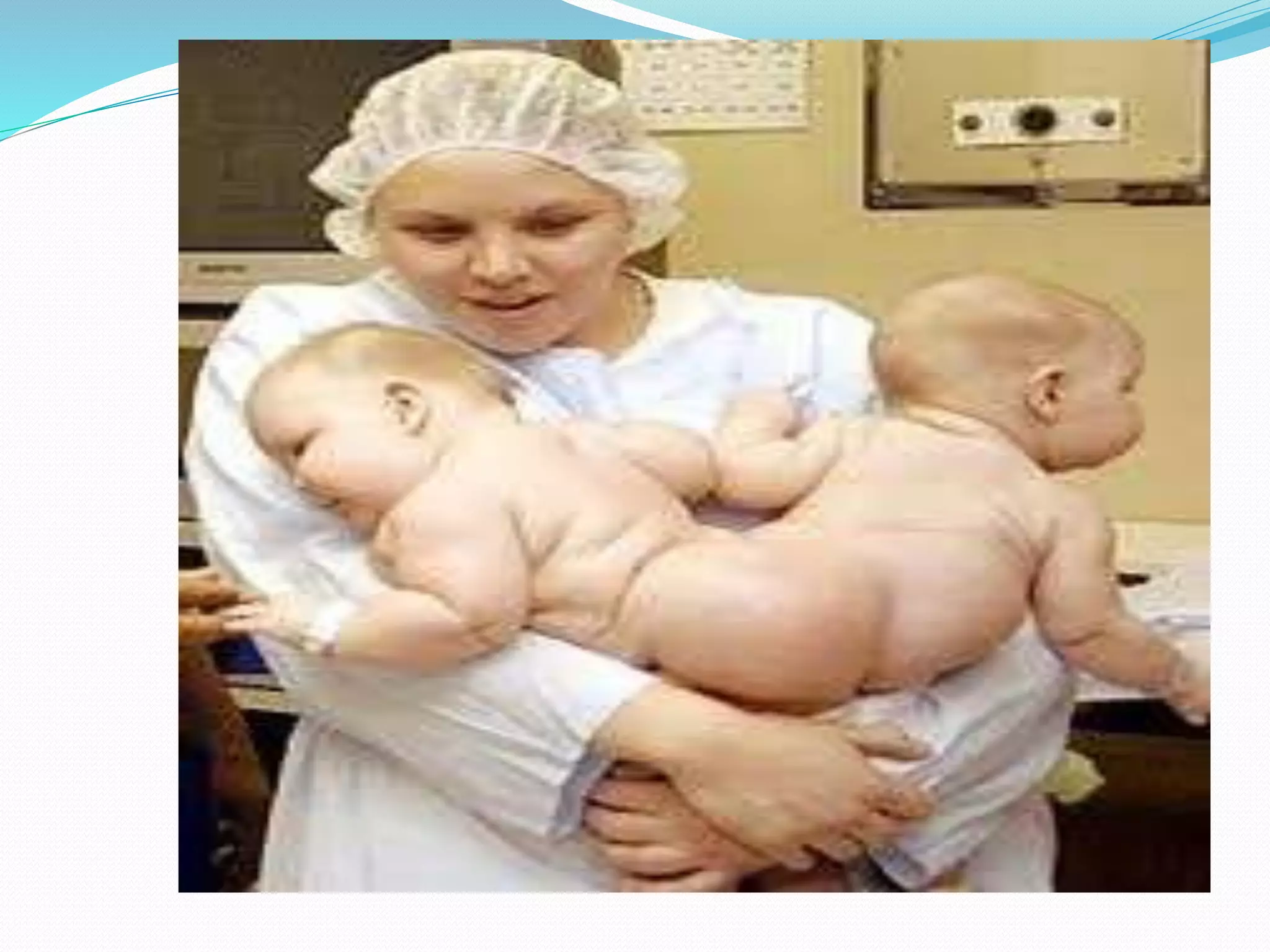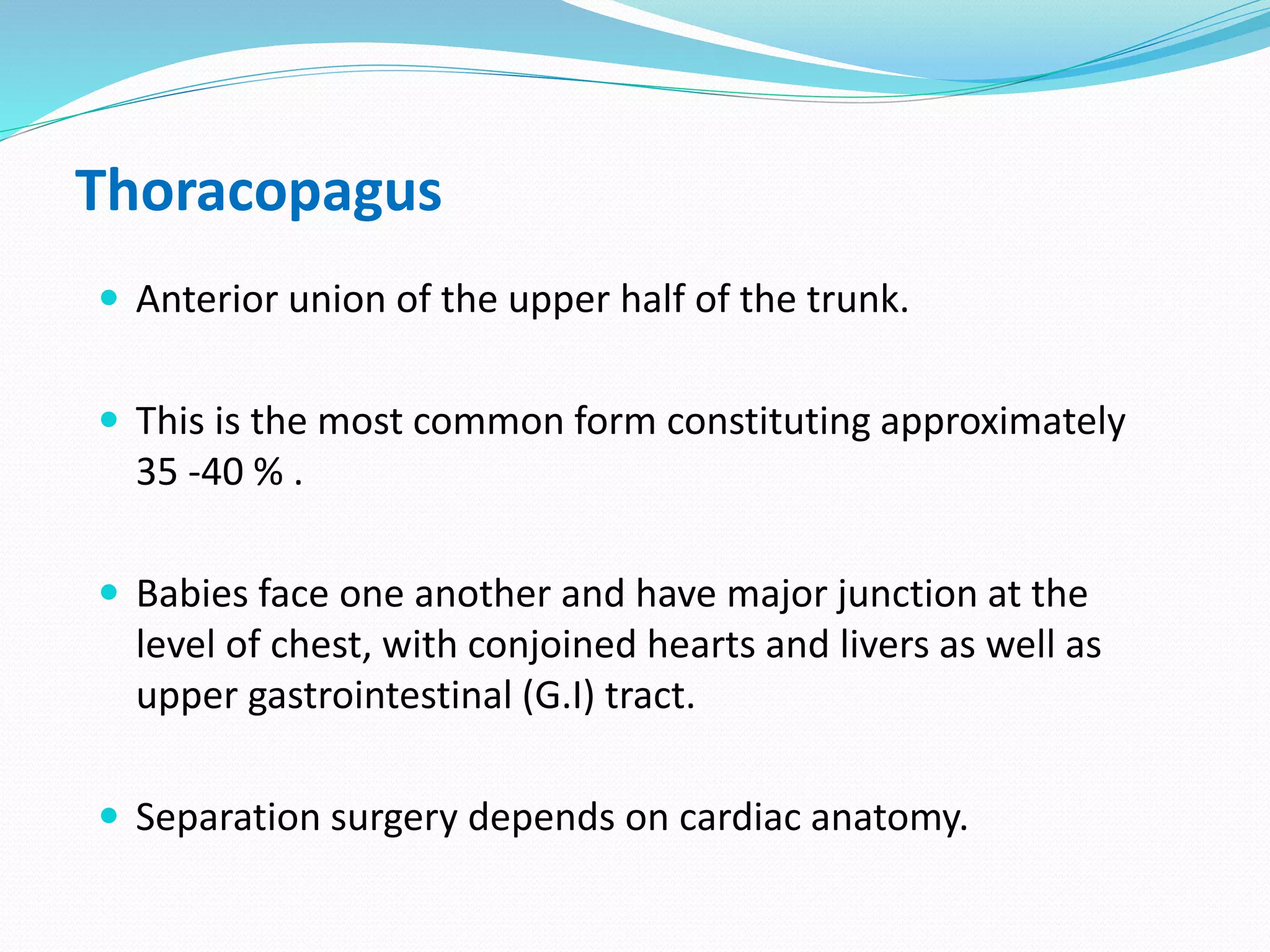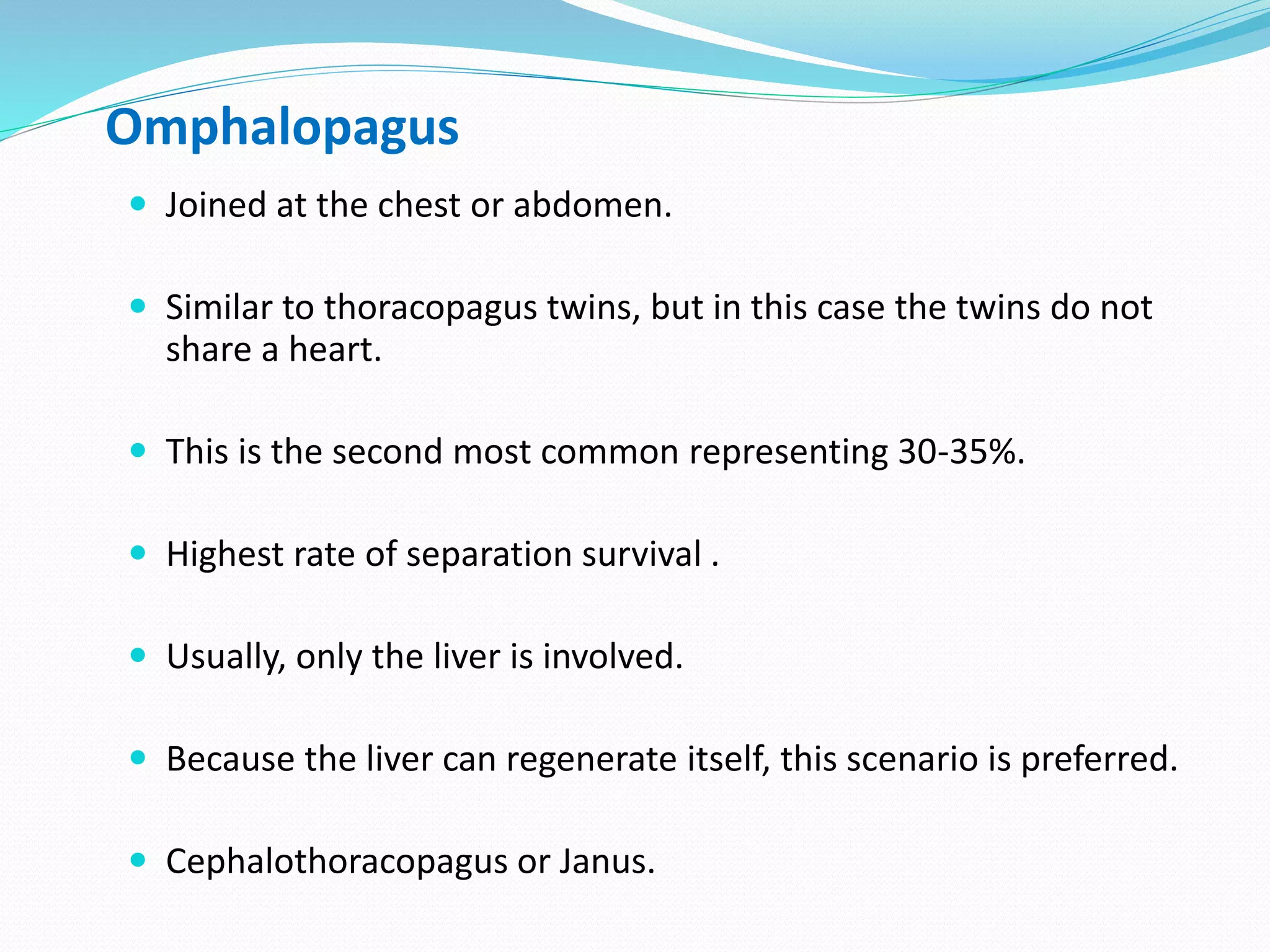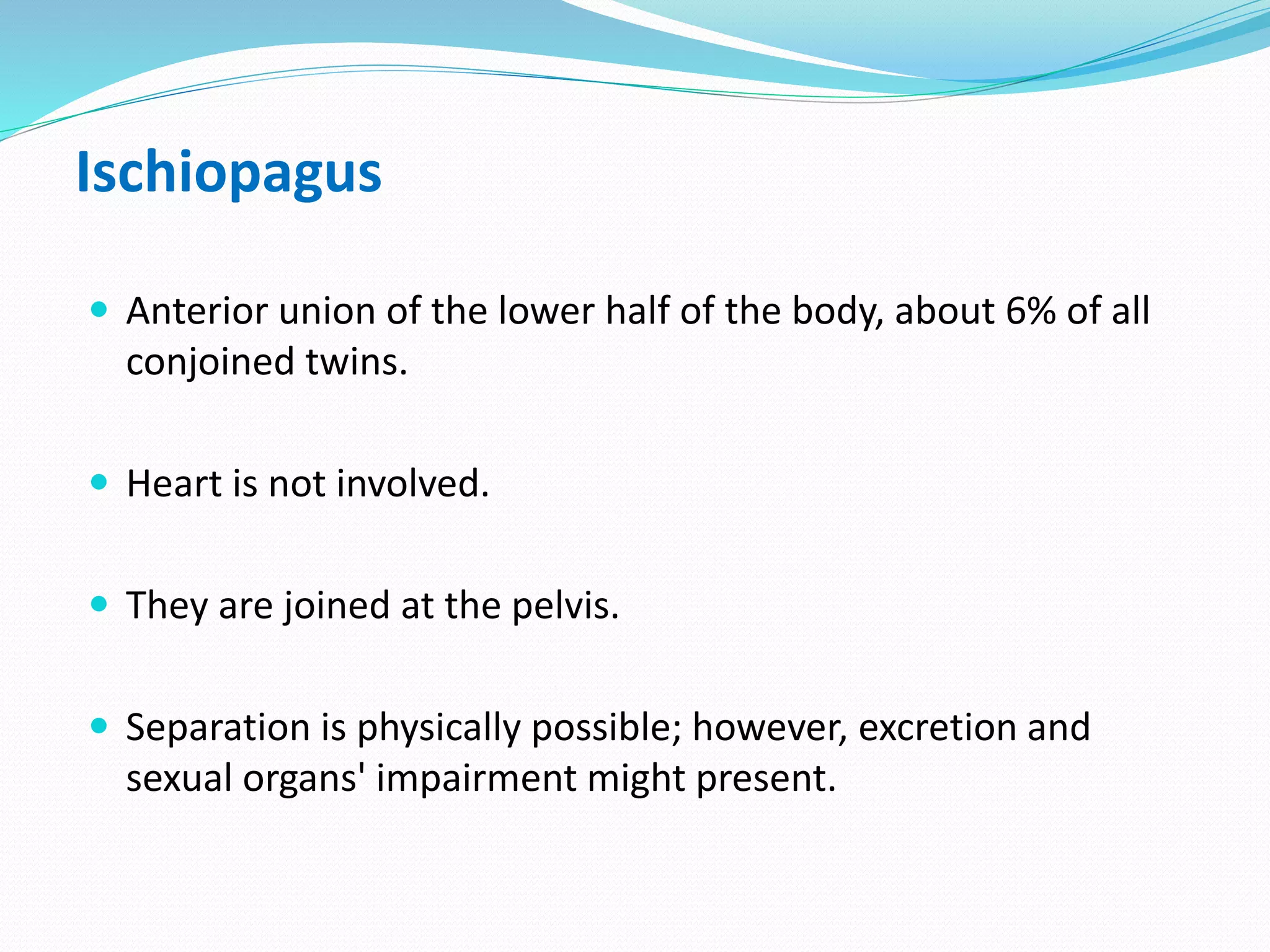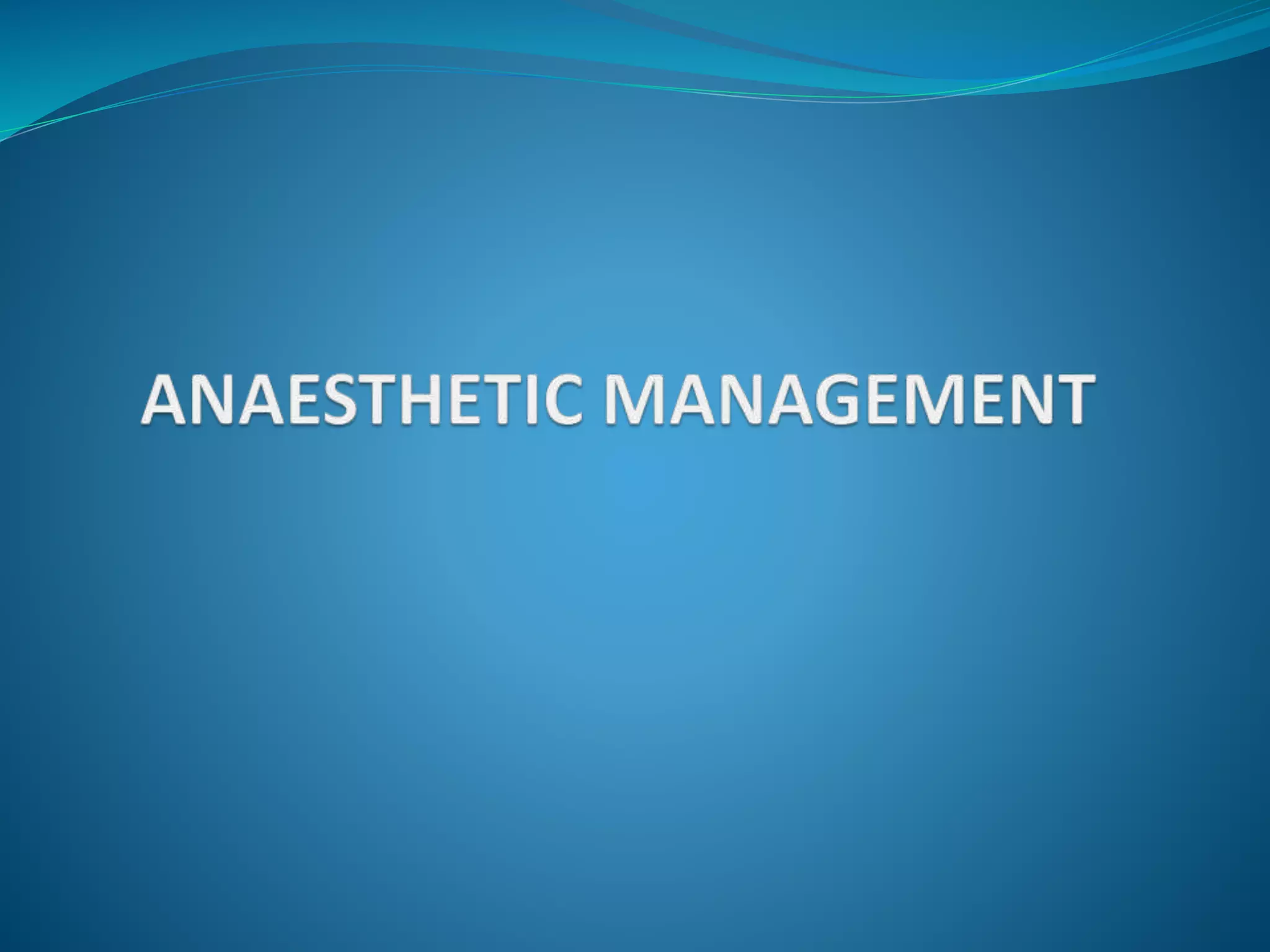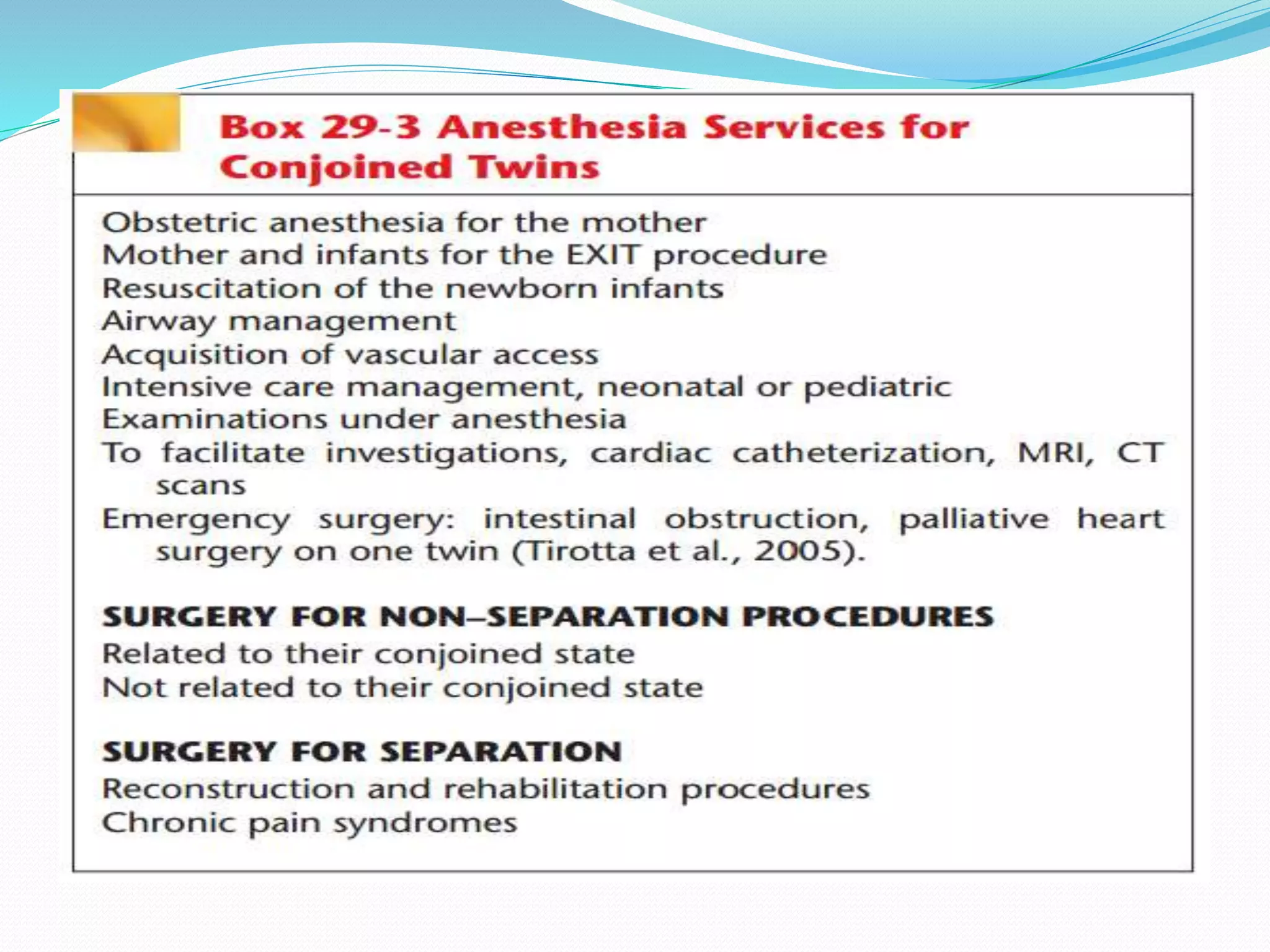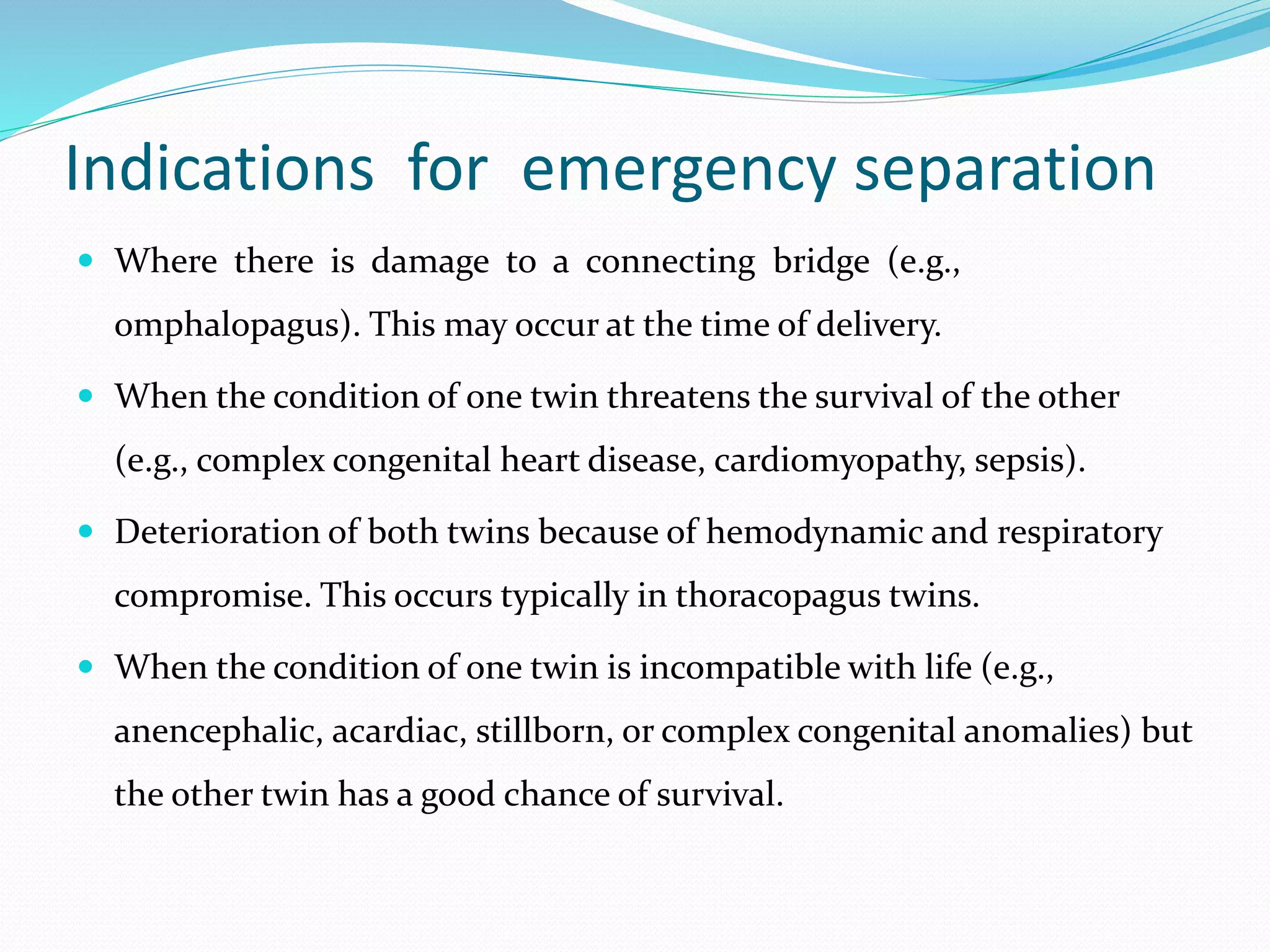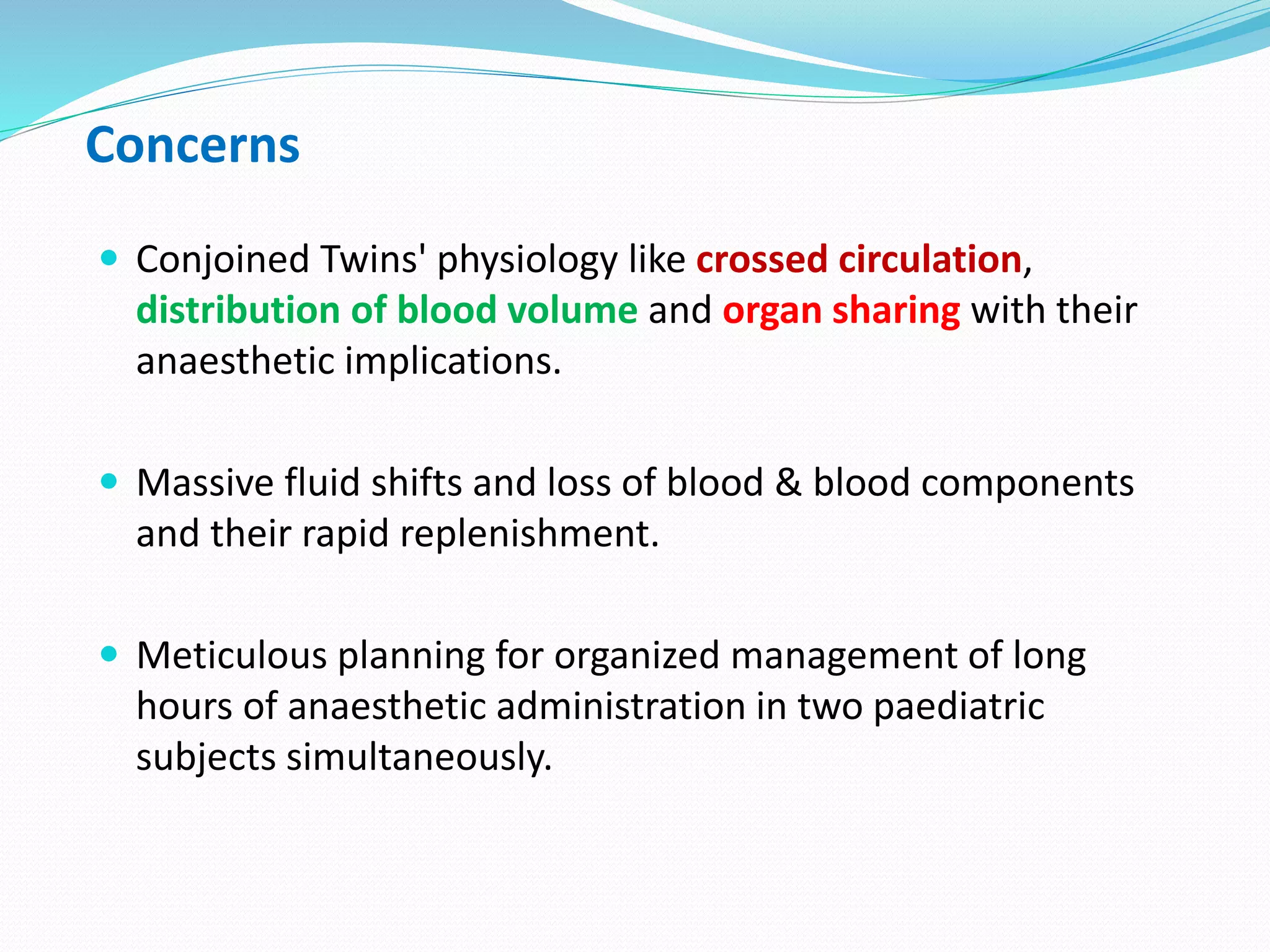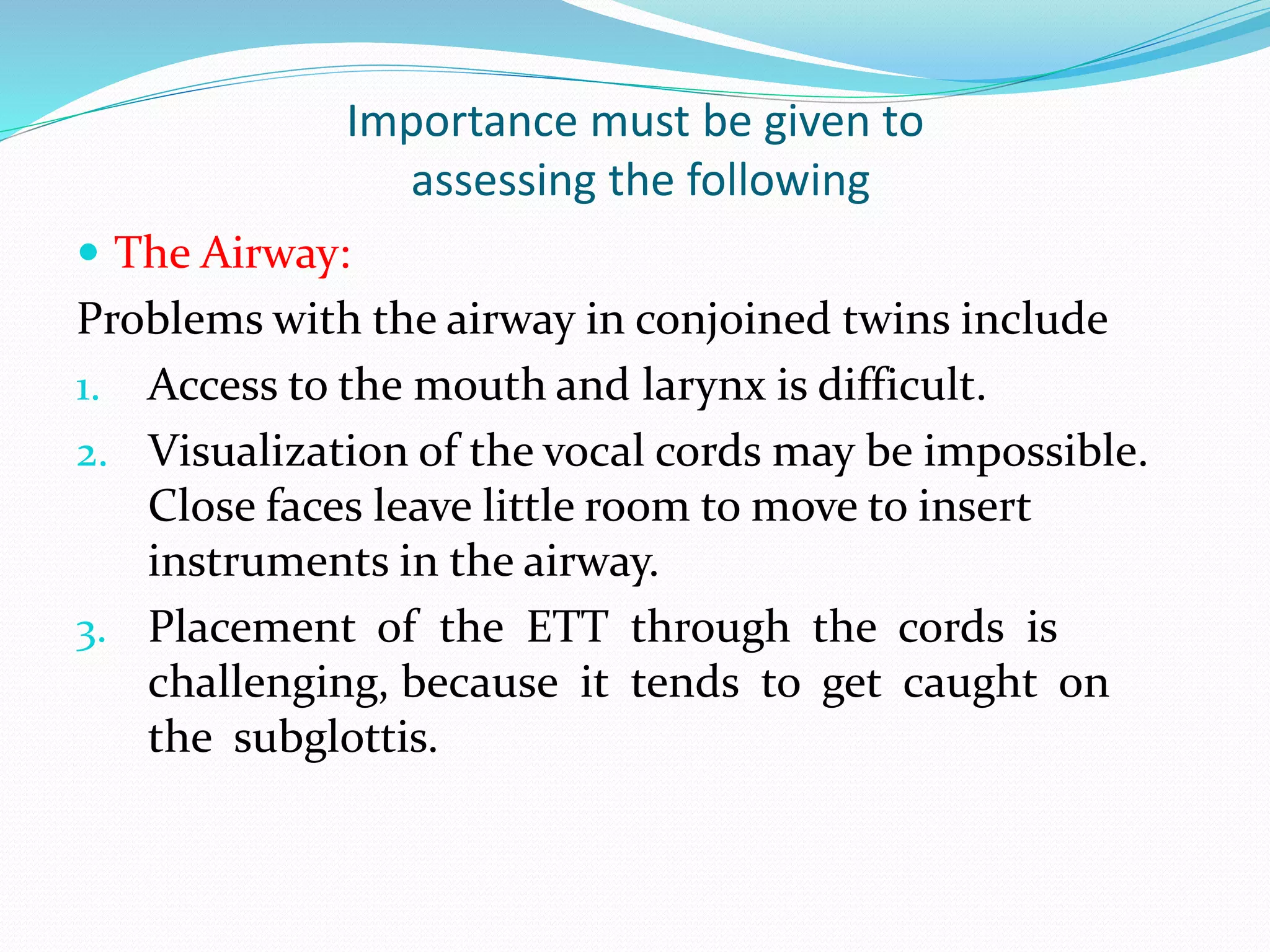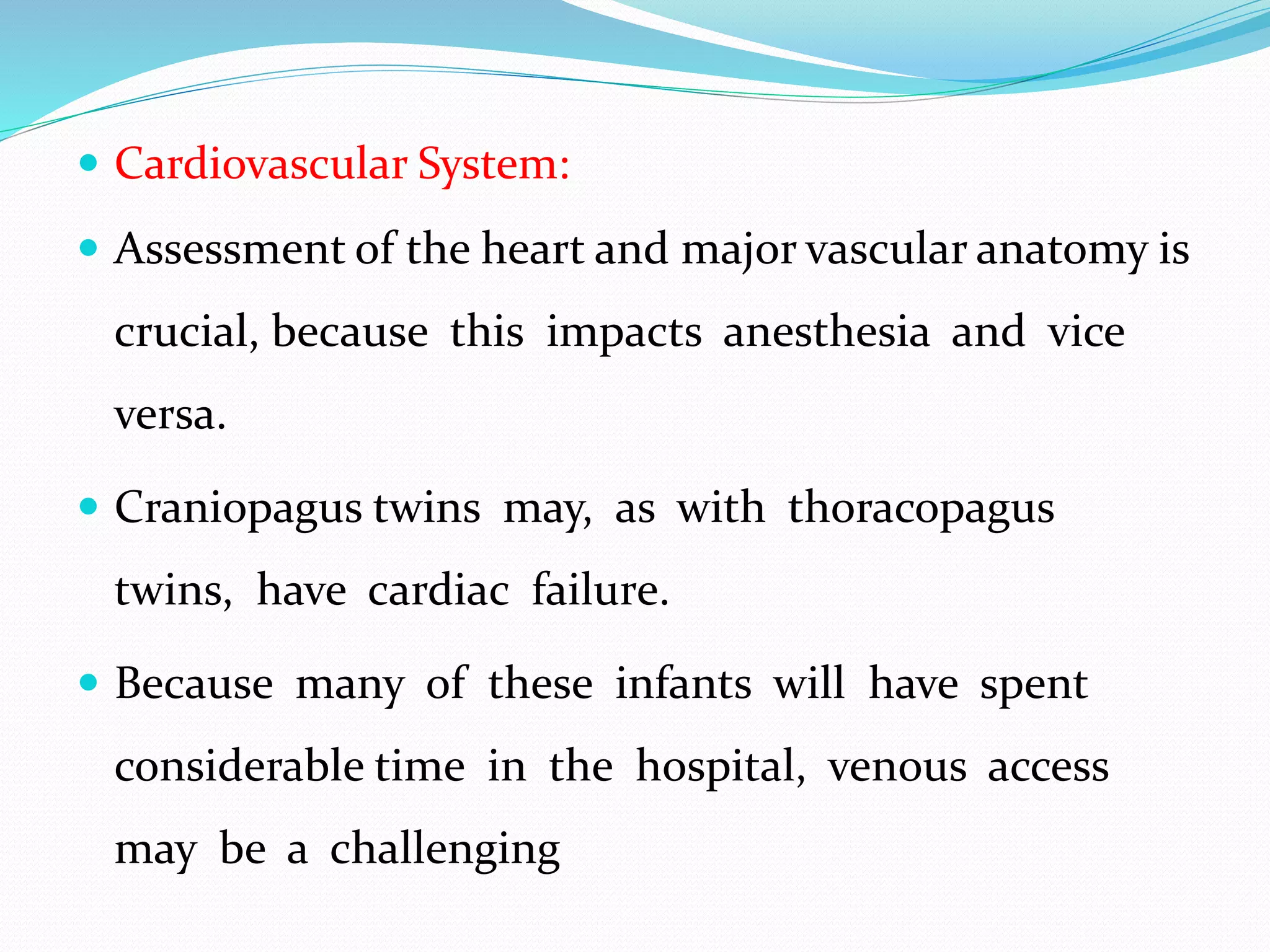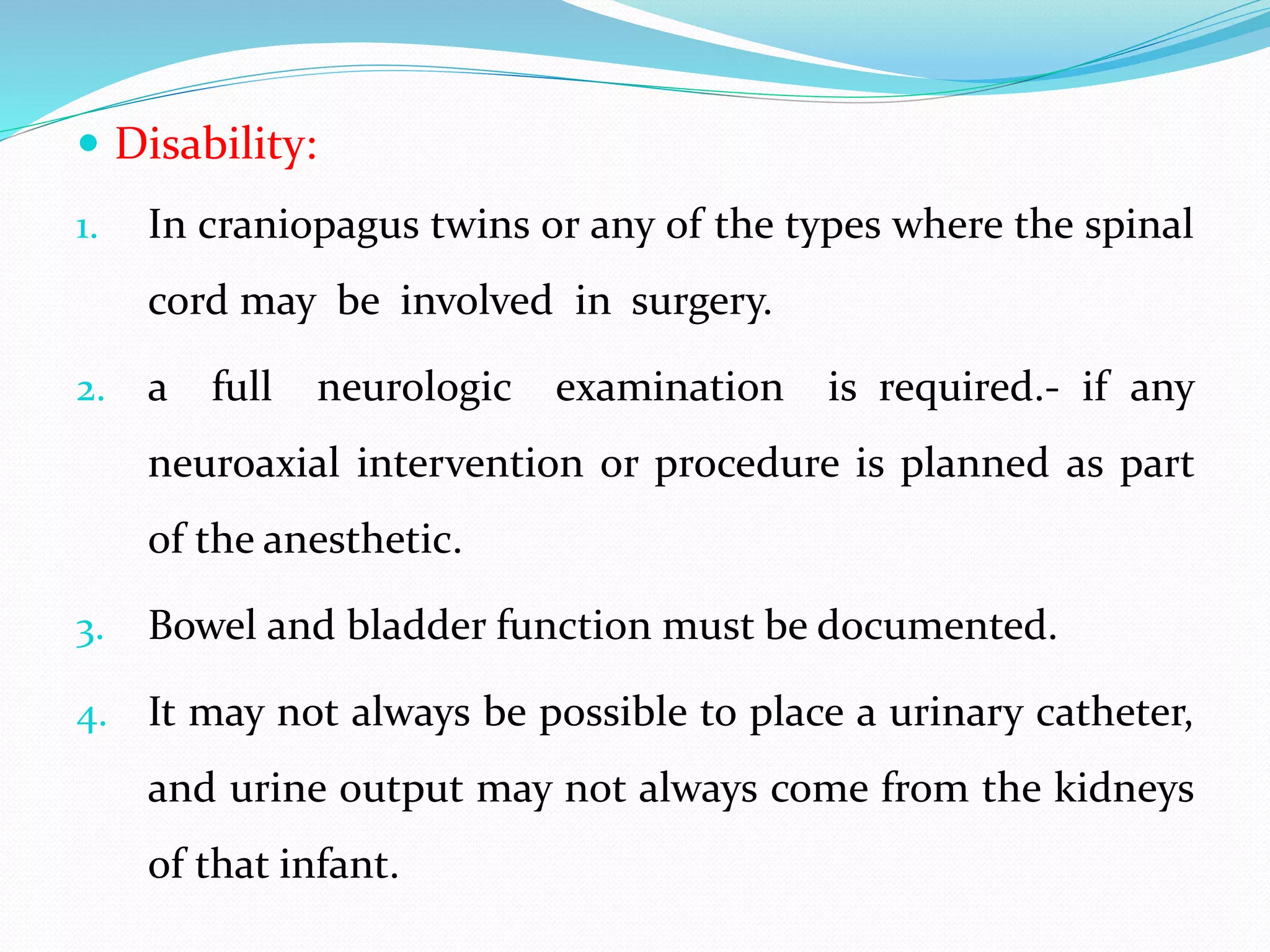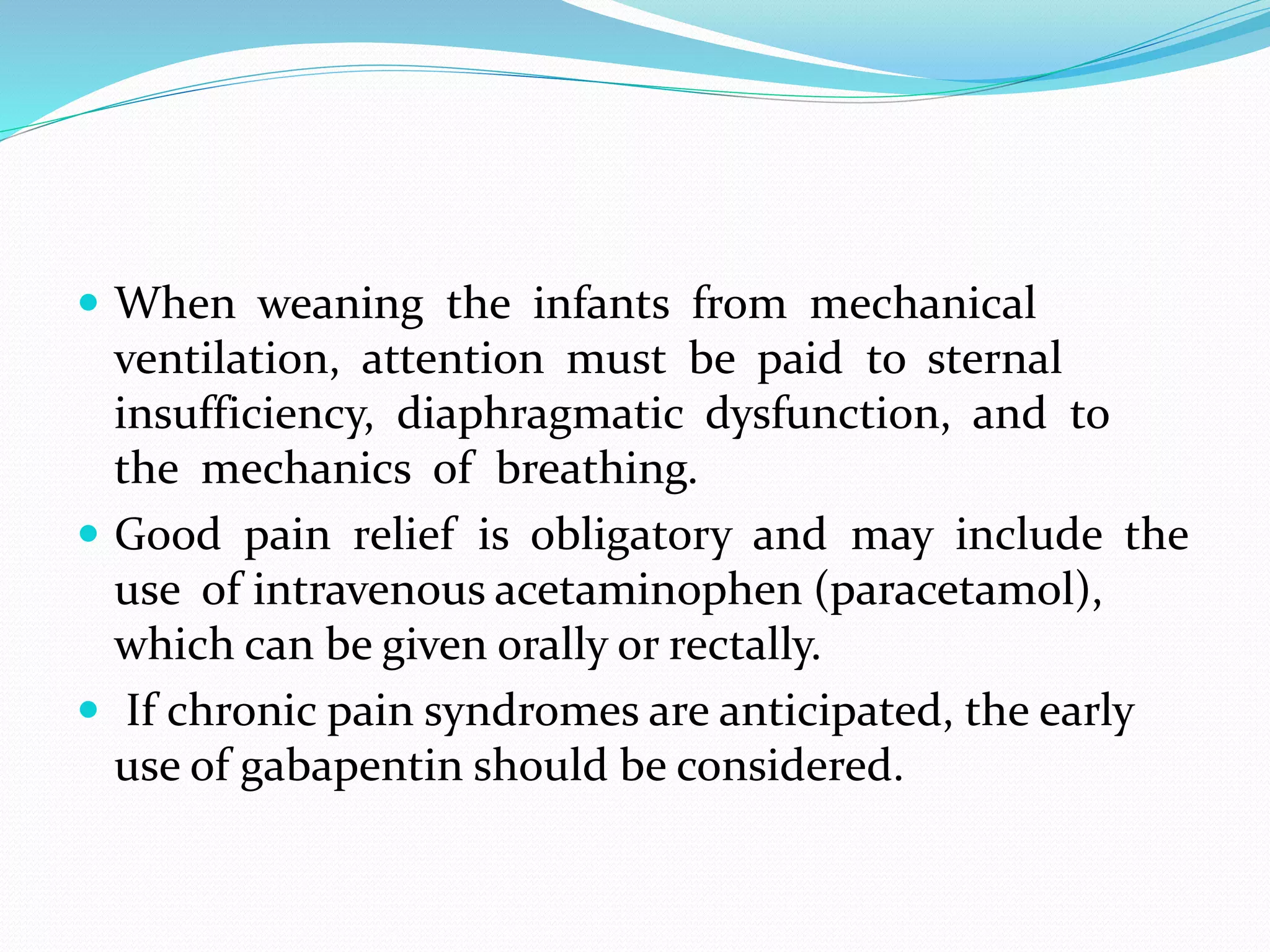Dr. Kumar presented on the topic of conjoined twins. Some key points:
- Conjoined twins occur in approximately 1 in 50,000 births and are always the same sex. They result from a single fertilized egg that only partially splits.
- Classification is based on the point of conjunction. The most common types are thoracopagus (chest) and omphalopagus (abdomen).
- Separation surgery requires extensive planning due to risks of circulatory mixing between twins. Careful monitoring and individualized dosing of anesthesia drugs is needed.
- The challenges include potential airway issues, assessing cardiovascular and respiratory systems, and ensuring adequate monitoring and equipment for each twin. Metic





